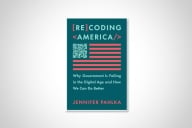You have /5 articles left.
Sign up for a free account or log in.
I haven’t seen anybody else write on this, exactly, but I’ve seen it repeatedly on my own campus. This is a quick attempt to see if my campus is somehow fluky, or if there’s something going on that isn’t getting enough attention.
One of the oft-heard objections to Open Educational Resources (OER) is that students retain more information from a printed page than from a screen. Therefore, the argument goes, we shouldn’t sacrifice a superior learning tool to save money.
I’ve taken issue with that for a while, simply because it’s often possible to print OER materials. In our all-OER developmental math class, for instance, students have the option of either using electronic material for free, or buying a printed copy from the bookstore for twelve dollars. (The cost is simply to defray paper and printing; we don’t make a profit on it.) When the institution takes it upon itself to make preprinted copies available at no more than the cost of printing, and gives students the option, I think it has gone a long way towards answering the “screens” objection. Equating “paid” with “paper” and “screen” with OER is simplistic.
Last week, though, I heard another benefit of OER that I hadn’t heard before.
Three different professors in three different disciplines independently mentioned that they’ve noticed that in the sections where they use OER, the students do more of the reading, and more often. One of them even has the reading quiz scores to prove it. All three mentioned -- unsurprisingly, to anyone who has taught -- that the class discussions are better when students have actually done the reading. For whatever reason, the students in the OER sections are doing more of the reading than the students elsewhere. The classes are correspondingly better, with higher grades and happier students and faculty.
To me, that puts a different spin on the “cost vs. quality” debate. To the extent that commercial materials are better -- a case-by-case issue, but still -- a direct comparison of quality assumes equal likelihood of students actually reading. But if they’re noticeably likelier to read OER than a commercial source, then the “quality” argument becomes trickier. Would you rather they pay for a better book that they may not use, or not pay for a slightly less impressive book (if that’s true) that they’ll actually read?
If a textbook falls in the forest and nobody reads it…
None of them really had a theory as to why the students are reading more in the OER sections. It could be a fluke: three professors mentioned it, but I haven’t done a full-scale survey. It may be the equivalent of a coin coming up “heads” three times in a row.
Alternately, the screens may actually be the key factor. Students don’t always have their textbooks with them, but they do always (or almost always) have their phones. If they can steal a few minutes somewhere to glance over material on the phone, that’s better than not looking at all. That’s especially true for students with jobs -- the vast majority -- for whom long blocks of uninterrupted time are scarce. If OER-on-the-phone lends itself better to reading on the fly than textbooks do, and students are rushed, then I could see where using OER might lead to more reading. It’s less than ideal, but the ideal is often out of the question.
Partisans of theories of “skin in the game” are probably howling at this point. They would argue that anything given for free will be undervalued, and anything bought will be taken more seriously. And there are times when that’s true. But it may be that convenience, accessibility, and affordability combine to outweigh the pull of sunk cost in this case. I know I have books I’ve bought and haven’t read, even as I continue to read free stuff online, so I don’t need to wander far to see this behavior. The coffee table in the living room is groaning under the weight of unread books. My long-suffering bride can attest to this.
So this one is really an empirical question for my wise and worldly readers. For those of you who’ve taught (or taken) classes with OER, did you notice students doing more of the reading? If so, do you have any thoughts as to why?







